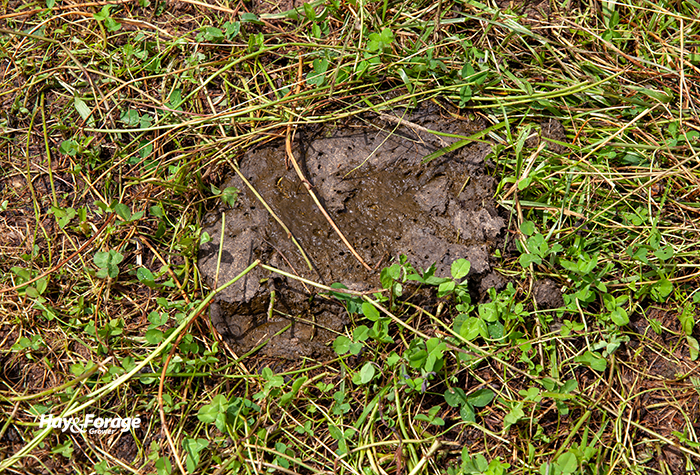
An invasion of orange cones and an influx of scaffolding are sure signs that construction season is upon us. Those summer crews that sport neon vests while repaving roads and repairing buildings are akin to a smaller fleet of organisms that reinforce soil structure and enhance soil health.
Dung beetles are like the construction workers of grazing systems. Though most species are less than an inch long, these industrious insects are responsible for the decomposition of manure. Dung beetles also aerate the soil, improve water infiltration, promote nutrient cycling, and reduce fly pressure in pastures.
Like a summer crew that begins work with the sunrise, dung beetles can arrive at a manure pat within minutes of deposition when temperatures are greater than 70ºF. Even so, different species of dung beetles are active at different times of year, and the species composition found in a grazing system can vary by the type of livestock and forage present.
According to North Carolina State University Extension, dung beetles can be divided into three basic nest-building categories: tunnelers, dwellers, and rollers.
Tunnelers: Tunneler dung beetles consume manure and burrow deep into underlying soil to deposit their eggs. These tunnels enhance water infiltration and percolation. Some of these dung beetles refill tunnels with loose subsurface soil.
Dwellers: Dweller dung beetles also consume manure, but these species either lay eggs directly into manure pats or just below the soil surface.
Rollers: Roller dung beetles break up manure pats, roll the material into pellets, and carry manure away from the site of deposition, like rolling a snowball through the yard to create the base for a snowman. These dung beetles then bury the manure pellets at a shallow depth as they lay their eggs.

In all three cases, dung beetles build their nests and protect their brood with layers of manure, which further incorporate organic matter and other nutrients into the soil. In fact, dung beetles can lay eggs, and thus incorporate manure, up to 18 inches deep into the soil profile.
The way dung beetles consume, distribute, and bury manure directly competes with face fly and horn fly habitats. These pests, which irritate livestock and spread diseases like pinkeye, rely on manure resources for reproduction. Therefore, the more dung beetles present in a pasture, the less fly pressure.
With that said, maintaining dung beetle populations when an insecticide is necessary to control flies can be challenging. Pour-on treatments may be excreted in manure and kill dung beetles; however, some formulations are more toxic that others. Insecticide ear tags, on the other hand, have been shown to have little effect on dung beetle populations.
Forage diversity and stand density also encourage greater dung beetle populations, as well as rotational grazing that prevents overgrazing and promotes more even manure dispersal. Just like noticing a new construction site on your daily commute, recognizing different dung beetle species in your pasture is an indication that work is being done below the surface to improve soil structure and health.

